Hormonal domino
An international team of scientists with the biologists of NCU have discovered an activity of adenylate cyclase in the receptor of auxins. This is a breakthrough in the research on the hormonal signaling of plants.
When humans get hurt, they feel pain. Between these occurrences there is a series of indirect relay reactions. An analogical set called transduction of signals exists in all living organisms, including plants. When a stimulus appears, for instance a draught factor as an attack of a pathogen, a plant receives this information through a receptor, analyses it, sometimes amplifies it and forms a corresponding reaction. Therefore, the signal from the receptor activates multiple elements such as proteins, ions, low molecular compounds, by means of which it transfers this information to the effector that formulates an answer. This message travels a defined way, from element to element, which requires the activation of a certain “Google Maps".
Plant domino
- This is like a domino – explains Dr. habil. Krzysztof Jaworski, NCU professor from the Chair of Physiology of Plants and Biotechnology of the Faculty of Biological and Veterinary Sciences of the University in Toruń. The causative factor, which in our case is a plant hormone auxin, the major intracellular regulator of plant growth and development, is like a finger which pushes domino blocks. The first block is the receptor, the activation of which moves other blocks. At the end of this chain is a little ball, the final factor, which changes the expression of a defined set of genes, either inhibiting or activating the formation of proteins which affect the final physiological response of the organism. It has turned out however that the knowledge on the structure and functioning of the first block, the receptor of auxin, was incomplete, and the work of the finger, which was auxin, more complicated, which we are proving in our research.
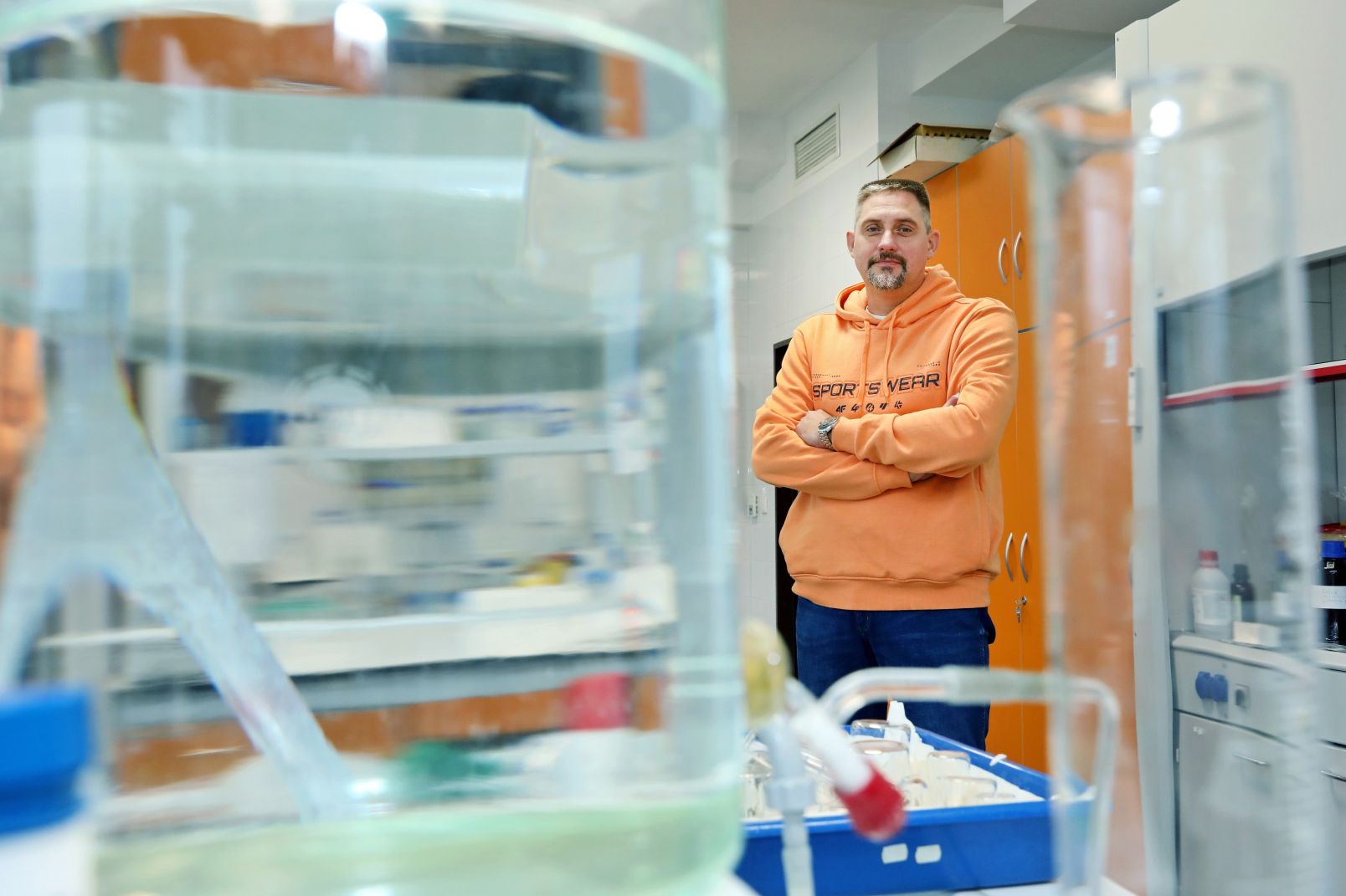
Photo Andrzej Romański
The scientists knew that the second block falls down, but they did not know the entire mechanism of how the first block transfers power to the next one. In order to do that, adenylate cyclase had to take place, which they had not known before.
Adenylate cyclase is an enzyme which produces cells of cyclical AMP (cAMP) from ATP. cAMP is a chemical compound, a signaling particle which, by joining proteins, changes their activity, which then leads to rearrangement of cell processes.
- For 20 years, the scientists considered that receptors of auxins did not have any intracellular activity – adds Mateusz Kwiatkowski, M.Sc., a doctoral student of professor Jaworski. – We have proved that they do have it. They have a domain with an activity of adenylate cyclase, although the processes in which the cyclase and its product like cAMP take part are still not fully discovered. For certain, they do affect the phenotype, which is the look of plants and mainly their roots. They participate in the inhibition of the root growth as a response to gravitropism (reaction of organs to the change of their position with reference to the vector of gravity. An example can be placing a plant in a horizontal position – its sprig will rise, whereas its root will move downwards -ed.).
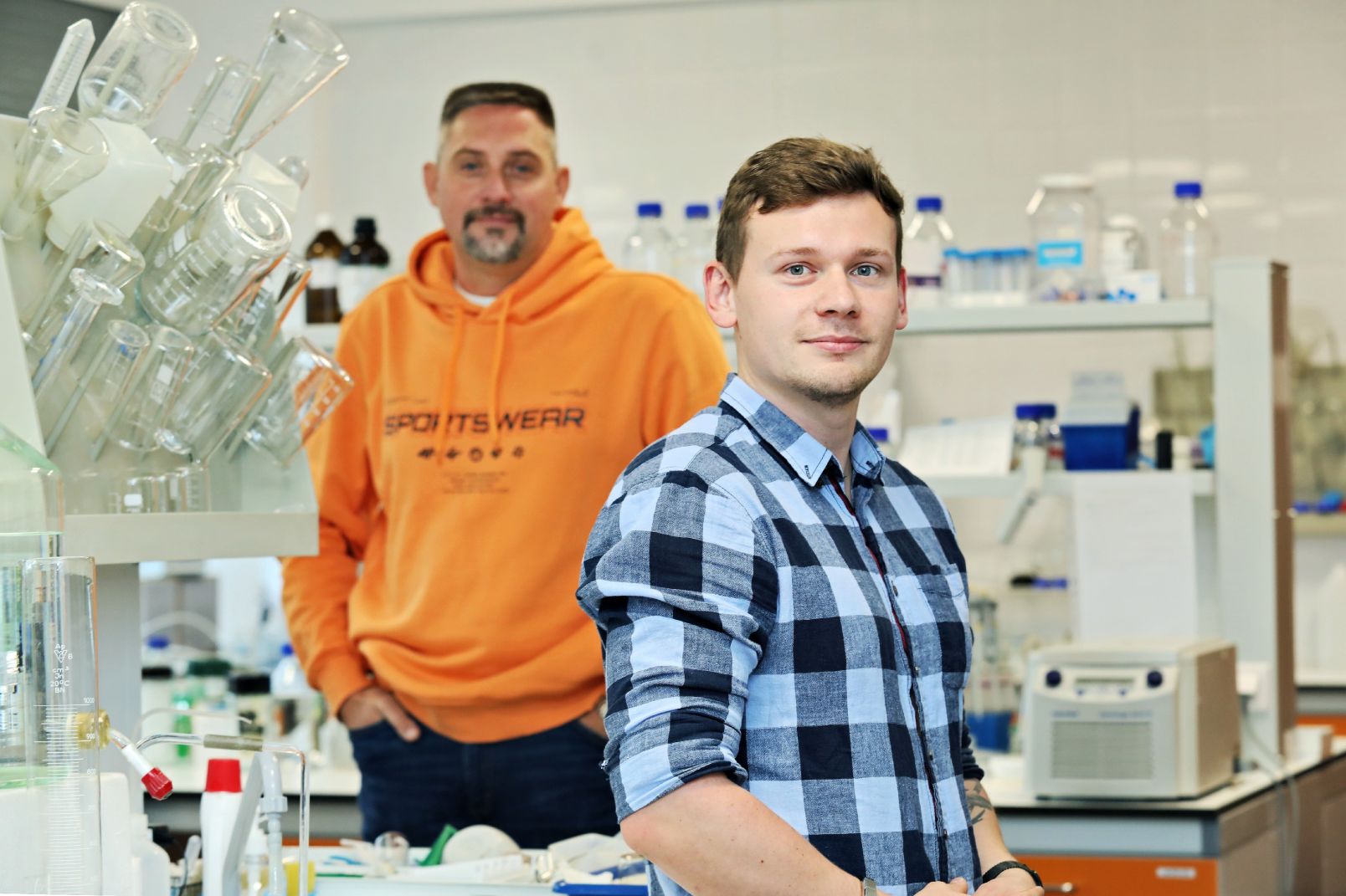
Photo Andrzej Romański
The results of the research of the international team were published in the article "Adenylate cyclase activity of TIR1/AFB auxin receptors in plants", which appeared in the November issue of Nature magazine.
Apart from Poles, the other team members are: Charo del Genio from Coventry University, Martin Kubeš and Richard Napier from the University of Warwick, Huihuang Chen, Lukas Hoermayer, Scott Sinclair, Minxia Zou and Linlin Qi i Jiří Friml from the Institute of Science and Technology in Austrii, who are the main idea makers of the projects.
Whereas the chief initiator of the cooperation was professor Friml, a world authority in the area of auxins, Polish scientists from NCU have huge experience in the field of plant cyclical nucleotides, marking them, analysing cyclazes and phosphodiesterases, which ate the enzymes engaged in their metabolism. The group under the supervision of Adrianna Szmidt-Jaworska, Dr. habil have been expanding their knowledge in the field for over 15 years.
The beginnings were hard. We were pioneers in search of plant adenylate cyclases – claims professor Jaworski. – We began our research and with small achievements started to prove that we were right, that both cyclic nucleotides and cyclases are an integral element of plant tracks of transduction. The work was facilitated with proper bioinformatic equipment and high-definition technics of detection such as liquid chromatography combined with tandem spectrometry of masses (LCMSMS), which allowed for quantity analyses at the level of picomoles.
It turned out that, using the experience of the researchers from Toruń and of professor Chris Gehring from the University of Perugia, the scientists from Austria found a domain of adenylate cyclase in the receptor of auxins. – We received genetic constructs with a template, on the basis of which we multiplied in the bacteria recombined forms of enzymes – explains Kwiatkowski, M.Sc. – We cleaned them and ran all necessary biochemical markings, setting the key parameters of enzymatic reaction. At the same time, in the course of directed mutagenesis, we changed the structure of the protein, which means that either in a sequence or in a group we excluded three function amino acids, which entirely carried away the activity of the researched adenylate cyclase.
- In our research on adenylate cyclase so far, we have focused only on a cognitive aspect, without referring it to a physiological role of this group of enzymes – adds professor Jaworski. – Yet, In the Nature magazine it connects our achievements so far and blends them in the existing systems of transferring information. What is even more important, it changes our perception of the phytohormones signalling. I believe we could not get any better.
Not only a humming sound
The research of the signaling of plant cell began at NCU almost three decades ago when the biologists started analyzing signal cells. Calcium ions and cyclical AMP and GMP are so called transmitters of information which appear for a moment in response to a stimulus. The presence of cyclical nucleotides in plant cells was proved already at the beginning of the 1970s. Despite the fact that many other reports on the same matter appeared, many questioned the results. – I suppose that those doubts were caused by that the cyclical densities of cyclical nucleotides in plant cells were very low, 1000 times lower than those registered in animal cells – says professor Jaworski. – It is also necessary to add that for many years there were no tools which would allow for precise marking of such low densities. Therefore, some scientists claimed that what we were registering was within the humming sound of the measuring equipment. AT the moment, we know that cyclical nucleotides in plant cells act locally, and low densities seem reasonable. We do not need more of them. They are to appear, initiate a reaction, and disappear. Therefore, two groups of enzymes are engaged in the efficient regulation of the levels of cAMP and cGMP: cyclases are responsible of their synthesis, and phosphor diestrses are engaged in the process of their inactivation.
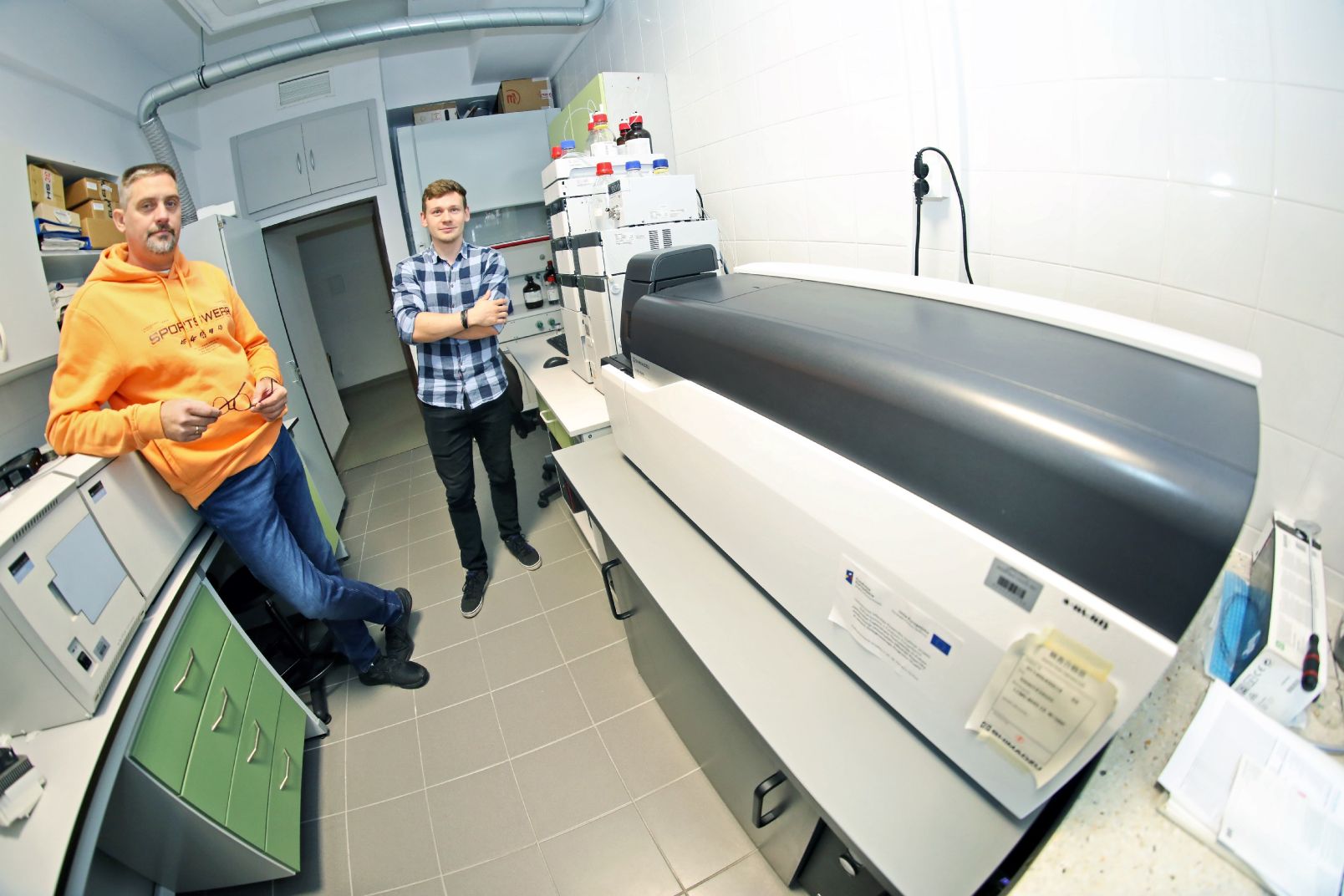
Photo Andrzej Romański
Undoubtedly, the moment of discovering these enzymes was a breakthrough in the research on cyclical plant nucleotides. It is professor Gehring that we owe the fact we started the research as it was him who in 2003 proved experimentally that there exists an enzyme in plant cells which runs cyclisation of GTP to cyclical GMP. The way to success was not an easy one as, despite well-known amino acids sequencies and having the proper bioinformatic tools, the researchers could not find the similarity between well characterized animal cyclases and potential plant cyclases.
These similarities are searched for by comparing the amino acid sequencies – explains Mateusz Kwiatkowski, M.Sc.
Professor Gehring went a different way. He claimed that if we did not observe similarities in sequencies, we should look for some sets of amino acids, so called function amino acids, which are for example responsible for binding of substrates, which are cofactors. And this hit the jackpot! Using various tools and observing how the function amino acids are placed, professor Gehring noticed a certain dependency in their set. On the basis of this discovery, he created a searching motive which allowed for searching and identifying the protein domains which are characteristic for cyclases.
In 2003, professor Gehring identified and described the first plant guanylate cyclase. The work by the team from Toruń appeared as the second one. In 2013, however, they were the first to have characterized the plant adenylate cyclase, in search of which they created their own searching motive.
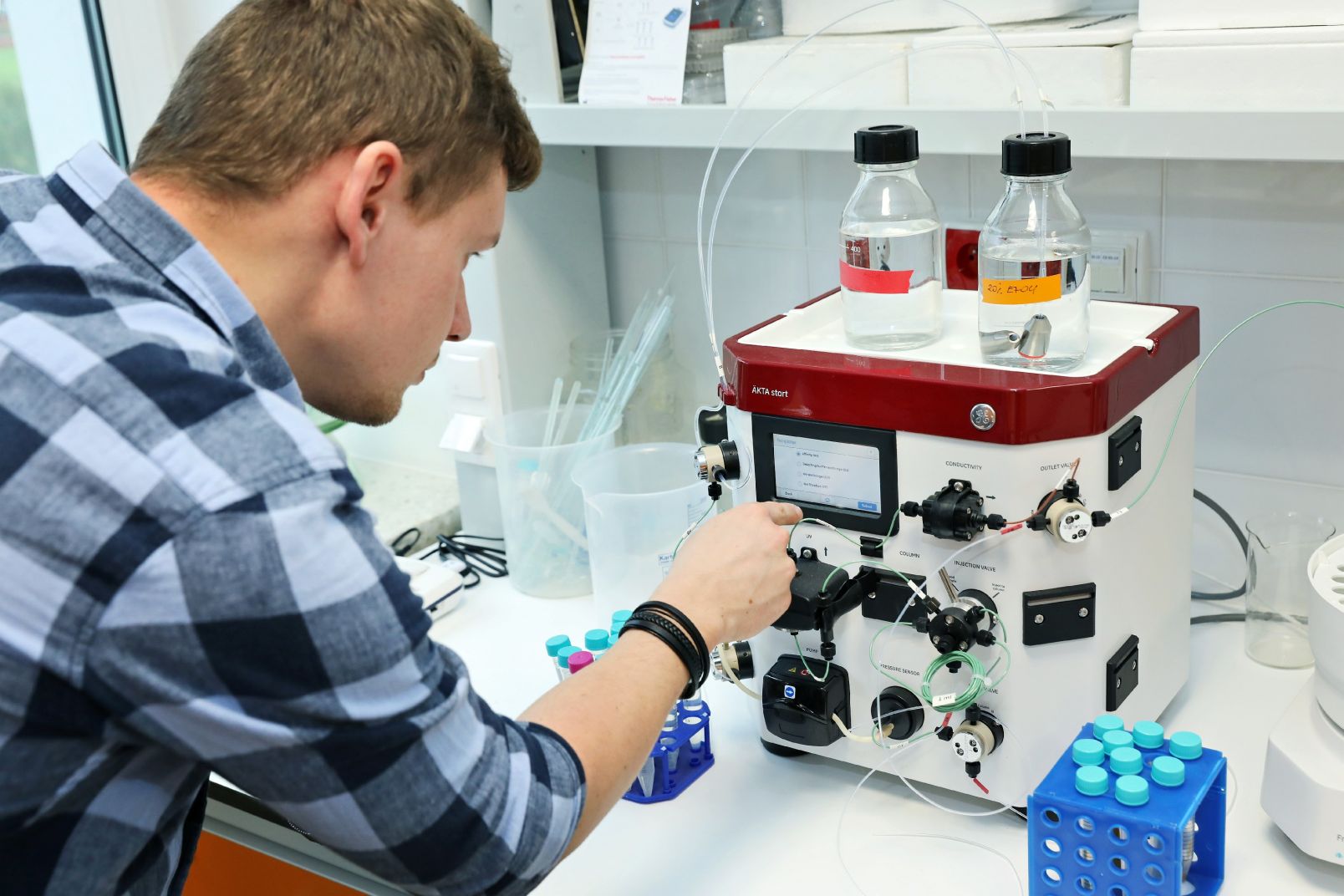
Photo Andrzej Romański
- Once we moved to comparing the existing motives in plant and animal cyclases, it turned out there were two significant differences – says professor Jaworski. – First of all, their domain structure is different. Second of all, plant cyclases do not constitute single proteins, which is very common in the animal world. They are a part of multi-domain function proteins.
They are described as moonlight, which means those which have at least two functions. We already know that there may be more domains of various functions in one protein, which is to be proved by the biologists from Toruń. – The very discovery of such enzymes did not cause too much confusion in the world of science – admits professor Jaworski. – It is difficult to get through with the information if only a few centers deal with this issue – apart from our team there are also four other centers in the world. Luckily, we all cooperate, making – as one of our colleagues described – a family of cyclical nucleotides. Now, a new center has joined in (Austria – ed.). Although it is beginning its adventure with cyclases and cyclical nucleotides, together we are turning upside down the previous knowledge on the issue of auxins and cyclical nucleotides. I remember that when it was all beginning, there was only the team of professor Gehring and ours, at NCU. At the beginning there was a lot of competition between us, but sook we joined forces. A few years of cooperation has been going very well and we have been achieving a lot of successes. Year by year, it is going better and better.
Changes in the canon
The scientists have just returned from a conference devoted exclusively to auxins, where 150 other specialists in the field took part. They presented there the results of their research, which stirred up a lot of interest.
The discovery the domain of cyclase in the receptor of auxins changes the canonical outlook on the transduction of the hormonal signal – says professor Jaworski. – Now, it is necessary to consider cyclical nucleotides, which are now becoming to play not the very superior role, but a very crucial one.
Mateusz Kwiatkowski, M.Sc. predicts that soon there will begin a search for similar active centers in phytohormones. – During the next few years, the outlook on the phytohormonal transduction of plants' signal will certainly change – claims professor Jaworski. – I am convinced that it will proceed that way Mateusz mentioned. We also have all grounds to think that the receptor of auxins is not an isolated case. We may expect that most proteins of receptory character can be use a similar mechanism which takes into consideration the participation of cyclases and cyclical nucleotides. Not necessarily does it need to be adenylate cyclase. It can be guanylic. Its mechanism is the same, ant its subtract only a little different.
In our next research we want to focus on the search of effectors, which are proteins which interact with cAMP and cGMP, and enzymes which inactivate this signal cell. Once we have reached out aim, the process of signal transduction in plants' cells with the participation of phytohormones and cyclical nucleotides will be less enigmatic – states Mateusz Kwaitkowski, M.Sc., (who has just defended his doctoral thesis by proving the existence of phosphor diesterases in plants, which is a second group of enzymes engaged in the metabolism of cyclical nucleotides. -ed.)
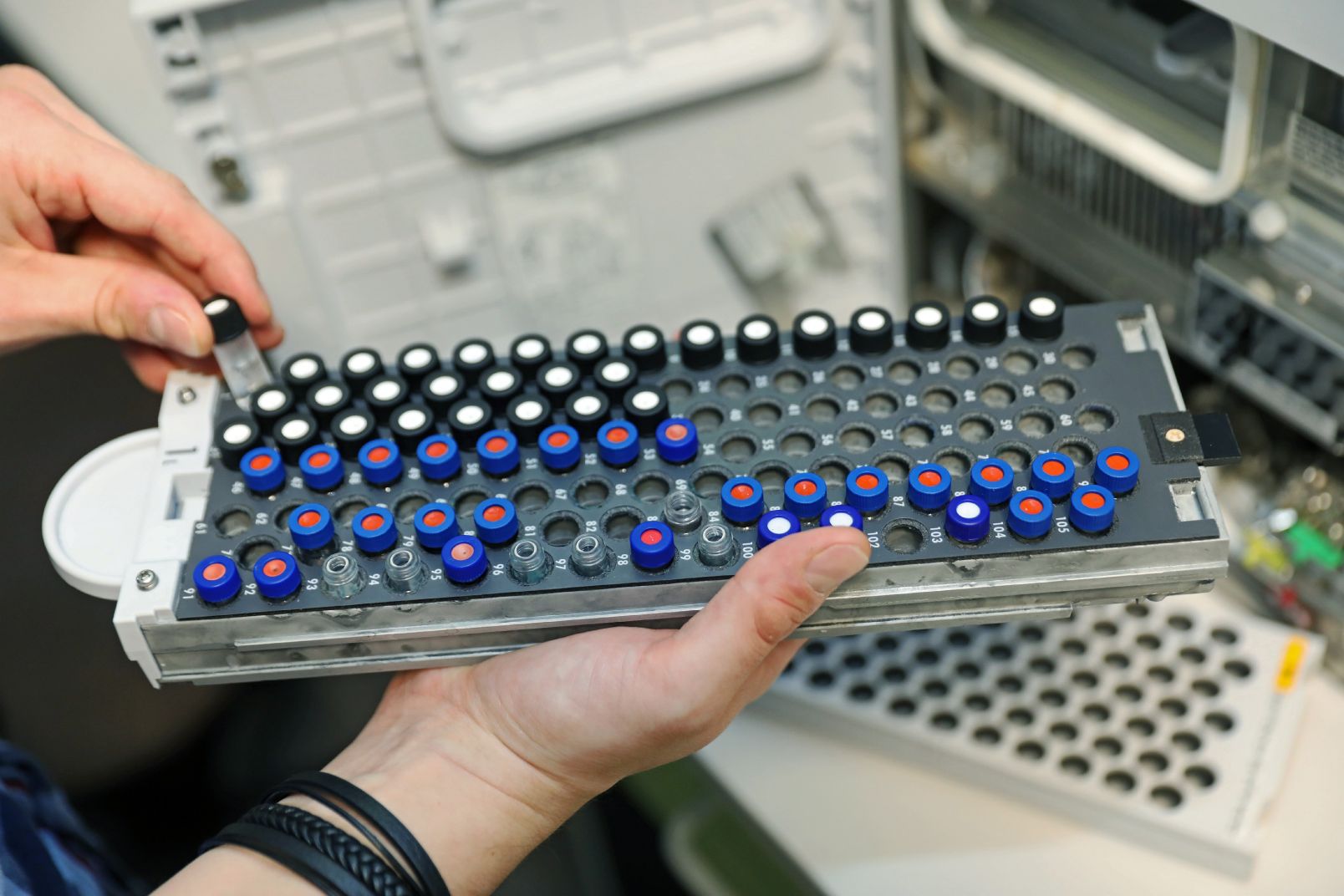
Photo Andrzej Romański
The scientist from Toruń believe that after the publication in “Nature" no one will question the existence of cyclases and cyclical nucleotides in plants. – I am extremely satisfied that after so many years of work it turned out that what we were doing was the right thing – concludes professor Jaworski. – We know that professor Gehring is also very content. He used to say that: if they are cyclical nucleotides there must also be enzymes which regulate its level. He did not expect it is so complicated. Neither did we.
 NCU News
NCU News







 Natural sciences
Natural sciences

 Natural sciences
Natural sciences
 Exact sciences
Exact sciences